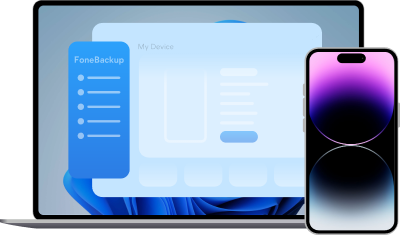Tutorial: How to Clear System Files on iPhone Storage
This tutorial mainly introduces two methods to clear system files on iPhone Storage. If you feel the System Data has taken up a significant amount of your iPhone Storage, follow the methods here to clean it up.
How do I reduce System Data on iPhone Storage?
I have a 64 GB iPhone. I’ve noticed that something called System Data has taken a significant amount of my iPhone Storage, making the storage even more inadequate for me. So what consists of System Data and how can I reduce it on iPhone Storage?”
What’s in System Data?
Previously, “System Data” was called “Other” in iPhone Storage, but has been renamed “System Data” in the latest versions of iOS. It contains miscellaneous files that aren’t included in the main categories. Some of the most important other files include:
- The Safari browser cache
- Mail cache and mail attachments
- Cache files associated with many apps
- Cache and other system files generated by iOS
Why are systems files taking so much iPhone storage?
After finding out what’s in System Data, let’s figure out why the systems files in System Data have taken so much iPhone storage. Here we listed three reasons.
Reason 1. Default temporary files
System Data is constituted by data from system apps, OS components, and other elements that make iOS work fine. When these components function, they create temporary files, caches, and other data that make device management easier. in other words, as long as you begin using your iPhone, it will create default files automatically. A few months later, these temporary files could eat up GBs of your iPhone space.
Reason 2. System management files downloaded
Files downloaded as part of System management can also cause the System Data to consume a lot of space. For example, if you downloaded multiple Siri voices or language packs, as well as temporary files from Safari, they will be saved in the system folder.
Reason 3. Error in iOS
An error in iOS could also be the cause of your System Data taking up so much iPhone storage. For example, an error in iOS 18 and iPad OS 18 caused a miscalculated figure of System and Other storage to appear on iOS devices.
Four methods to clear system files on iPhone storage
In this section, four methods are introduced to teach you how to clear system files on iPhone storage. Before starting, we need to note that these four methods below all aim to clean up some sort of cache, files, or other kinds of data on your iPhone. In case it will accidentally clean up some data you need, you’d better backup your iPhone data in advance.
Method 1. Reduce iPhone system storage automatically with iTunes
The first method is to use iTunes to automatically reduce iPhone system storage. But it’s important to note that the reasons why this method works aren’t entirely clear. But presumably, when you connect a device to a computer and open iTunes, it performs some sort of cleanup. It will automatically clean caches and temporary files from the iOS System section, possibly in preparation for a backup to iTunes. When it’s done, it can free up a significant amount of storage space on the device.
Step 1. Download the latest version of iTunes on your computer from the Microsoft Store and open it.
Step 2. Next, use a USB to connect the iPhone to the computer. If you’re connecting for the first time, you’ll need to go through a few easy verification steps. When your iPhone is successfully connected to iTunes, just wait for a few minutes. There’s no need to sync or do anything else; simply leave it alone.
Step 3. Next, go to Settings > General > iPhone Storage and go all the way down to System Data, it should have recalculated and, in most cases (but not always), been significantly reduced in size.
Method 2. Clearing Safari caches
If you often use Safari browse, then cleaning history and website data in Safari will help free up iPhone storage. Go to Settings > Safari > Clear History and Website Data, then confirm it.
Method 3. Deleting Mail data
When you use the Mail app, your iPhone saves a cache of all the files, photos, and videos you’ve viewed on your device. You could clear the caches by deleting your email account and then re-sign.
Step 1. Go to Settings > Mail > Accounts. Choose the email account you want to delete.
Step 2. At the bottom, tap Delete Account. Confirm that you want to remove the account by tapping Delete from My iPhone.
Method 4. Erase all contents and settings on iPhone
The final solution to reduce System storage on iPhone is to erase all contents and settings on iPhone. If Erase All Contents and Settings not working on your iPhone, you can also choose another third-party tool to erase your iPhone.
Step 1. Go to Settings > General > Transfer or Reset iPhone > Erase All Content and Settings. This will take a few minutes.
After this, you need to go through the usual setup process again. You can choose how you want to transfer apps and data to your iPhone.
Again, in order to provide dual protection for your iPhone data, you’d better use both a third-party tool and iCloud to back up your iPhone data, as you may fail to find compatible iCloud backup sometimes.
Bonus tip: Backup iPhone data before erasing via the free iOS backup tool AOMEI FoneBackup
As mentioned before, you are suggested to backup your iPhone data before trying the above-mentioned methods. Therefore, we recommend the free iOS backup, erase, and restore tool AOMEI FoneBackup to you. With it, you can first backup your iPhone data to your computer, then erase your iPhone data to clear systems files on iPhone Storage, and finally restore your iPhone backup without any data loss.
- Diverse backup methods. It enables you to backup selective data, including photos, music, videos, messages, and contacts, or fully backup your iPhone.
- Multiple functions. It supports iOS data backup, data transfer, data restore, data erasion, photo deduplication, etc.
- Fast speed. Its backup speed is faster than many other mobile phone backup software on the market.
- Wide compatibility. It works with almost any iPhone, iPad, or iPod touch, as well as Windows 11/10/8.1/8/7.
Step 1. Download and install MBackupper on your Windows PC. Connect your iPhone to the computer via a USB cable and then launch MBackupper.
Step 2. Click Phone Backup > Locate Full Backup and click Get Started.
Step 3. Enable Backup encryption as you like. If it is enabled, your data such as Fitness records, Health, and Keychain can be private.
Step 5. Select a storage path to save the backup. Click Start Backup and wait until it finishes.
Note: If you want to backup only selective data on your iPhone, you can also click Selective Backup to choose photos, music, videos, messages, and contacts that you need.
As mentioned, AOMEI FoneBackup is also an iPhone data erase tool. When you finished using it to backup your iPhone, you can also use it to erase your iPhone data directly. Go to Toolbox > iPhone Eraser on the home screen and follow the guidance.
After backing up and erasing your iPhone, you can also restore the backup to your iPhone. Go to Backup History, locate your backup files, and choose Restore to make it. Please keep in mind that restoring full backup files will wipe out all of the data on your target iPhone, however restoring selective backup files would not.
Conclusion
This post mainly introduces why System Data has taken up so much iPhone Storage and how to clear system files on iPhone storage. Besides, we also offer you a free iOS data backup, erase, and restore tool to help you reduce system storage on your iPhone and at the same time, protect your data.

